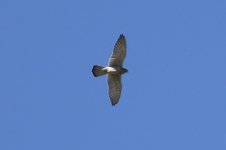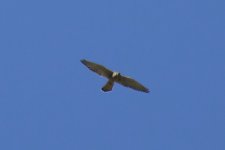Saw this from Rifugio Champillon, above Aosta, Italy earlier this week. Was told by a local farmer this was a 'gxxxxx?? falcon' - didn't quite understand what he was saying.
Can anyone id?
Thanks
TomC
Can anyone id?
Thanks
TomC







